On a crisp morning, large dark birds line the tops of trees with wings outstretched. These birds are vultures, and they are warming up for their day ahead.
Vultures will routinely seek patches of light in the morning before taking flight, and there are three leading theories to this behavior:
- The vultures use the sun as an energy boost to start the morning.
- The heat absorbed by the bird’s feathers cleans them of parasites.
- The sun can help vultures digest more efficiently.
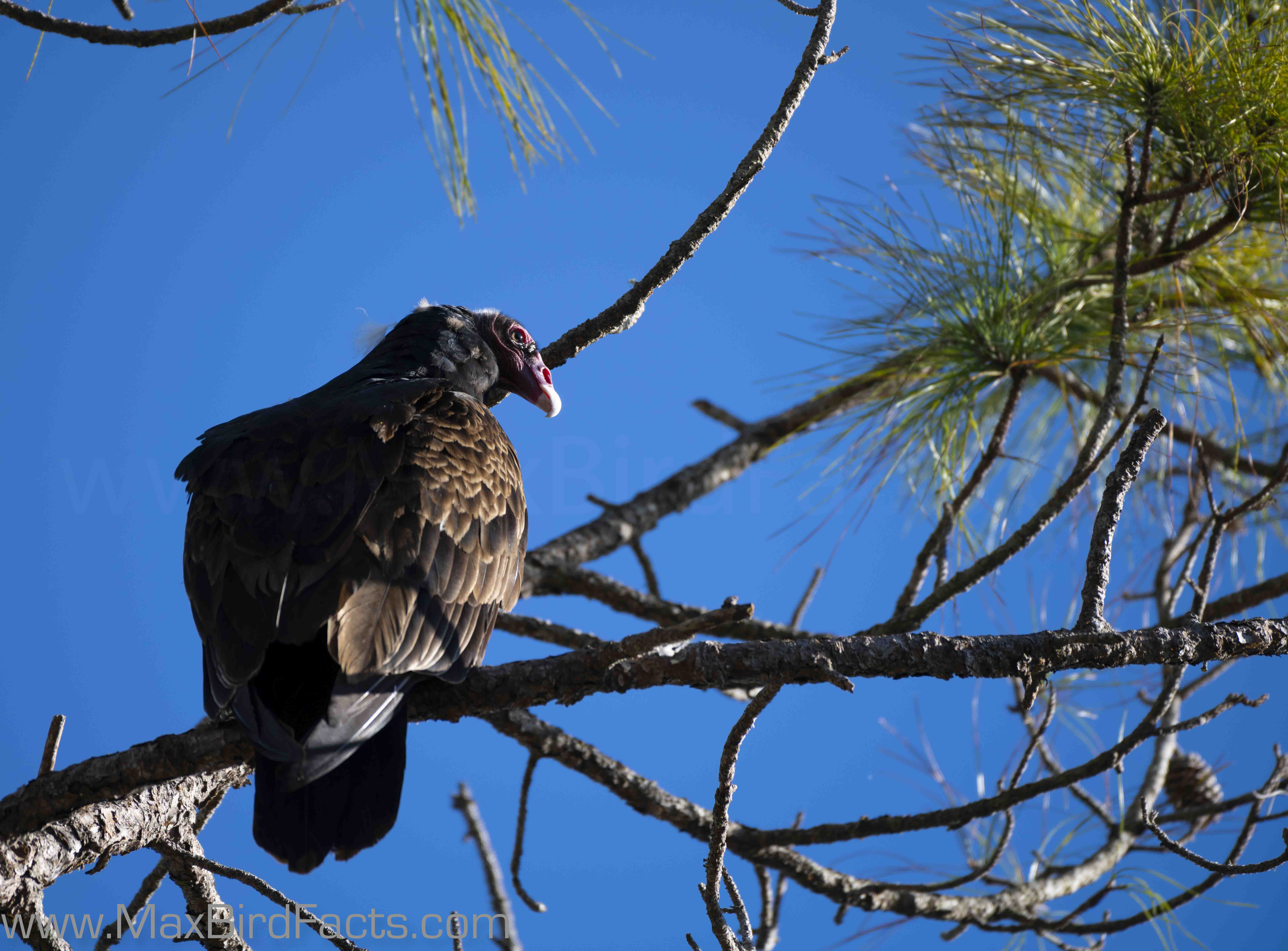
First, this behavior is more of an extra bump of energy for the birds, allowing them to be more efficient that day. Just like when we have our morning coffee for a caffeine boost, the morning sun fills this void for vultures.
The second, and possibly the most widely agreed benefit of this behavior is parasite relief. The heat absorbed by the sun may kill or deter parasites from hanging out on a bird’s feathers and skin.
Lastly is an intriguing theory for this behavior. The sun may act as a digestion aid. This theory isn’t quite backed by research, but I will discuss my thoughts later in this article.
Before we get into some of these theories, I think it is essential to clarify that this isn’t the same behavior as an alligator warming up on a riverbank. These birds don’t require the sun’s heat to start their day, unlike reptiles. Let me explain.
Birds vs. Reptiles
All birds are endothermic, meaning they regulate their body temperatures through their own metabolic functions. Reptiles are ectotherms, and they have to rely on the environment to keep them warm.
The way I remember this is by looking at the Greek prefixes of the words:
- Endo– means “inside” or “within.”
- Ecto– means “outside.”
You have probably heard of both of these terms by their more usual terminology, warm-blooded and cold-blooded. Where reptiles are coined as being cold-blooded and birds are warm-blooded.
Crocodilians have some fascinating adaptations to gain this energy quickly. Bony plates on their back, osteoderms, are porous and vascularized. Meaning this bony armor is filled with blood vessels that can rapidly gather heat and allow the reptile to become active.
Birds don’t need this. Instead of absorbing energy from the environment, birds need to stop their heat from leaking out. Downy feathers trap the warm air around their body, keeping them from being lost to the relatively colder air around them.
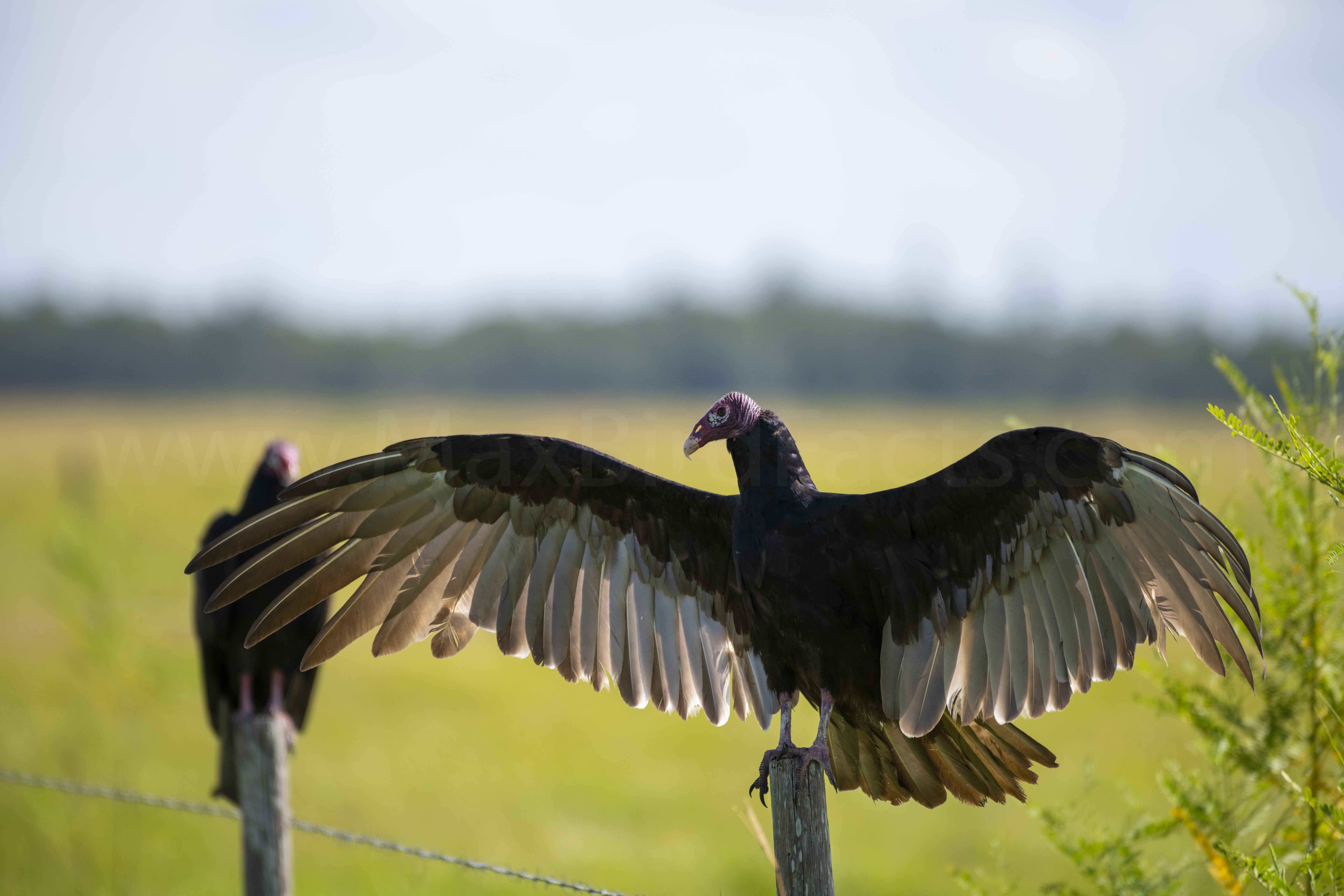
A bird’s body temperature averages 106˚F, meaning it will almost always be higher than the surrounding air. Heat diffusion is the movement of heat from areas of higher temperatures to lower, so the bird will invariably be fighting a losing battle.
The insulative properties of their feathers help to trap this close to their body and prevent heat loss. Paleontologists believe that feathers arose to satiate this requirement.
The earliest forms of the feather, known as pycnofibers, were found on nearly every member of the Archosaurs. Archosaurs were a clade of animals made up of dinosaurs, pterosaurs, crocodilians, and birds.
Pycnofibers probably gave rise to the current iteration of feathery integument we see on birds today. It has unquestionably taken on various new uses than its original intent, but feathers still hold their primordial values.
Salute the Sun – Energy Boost
Now that we’ve gotten through that, let’s get into our first theory. Many birds will lower their internal body temperature at night. This reduces their energy consumption, allowing them to rest easier.
Some birds can even go so far as to drop their metabolic rate to a fraction of its usual amount. Hummingbirds are well known for this, even getting their metabolism down to 1/15th its natural rate! Called torpor, this is an extreme measure of energy savings and can be potentially life-threatening to a bird if the air temperature drops too low.
Torpor and its effects are for an entirely different article. However, I felt it was a necessary illustration to show the drastic ways birds go to maximize their energy efficiency.
Vultures do lower their metabolic rates at night to save energy. These raptors need to bring their internal temperatures back up in the morning to go about their regular functions.
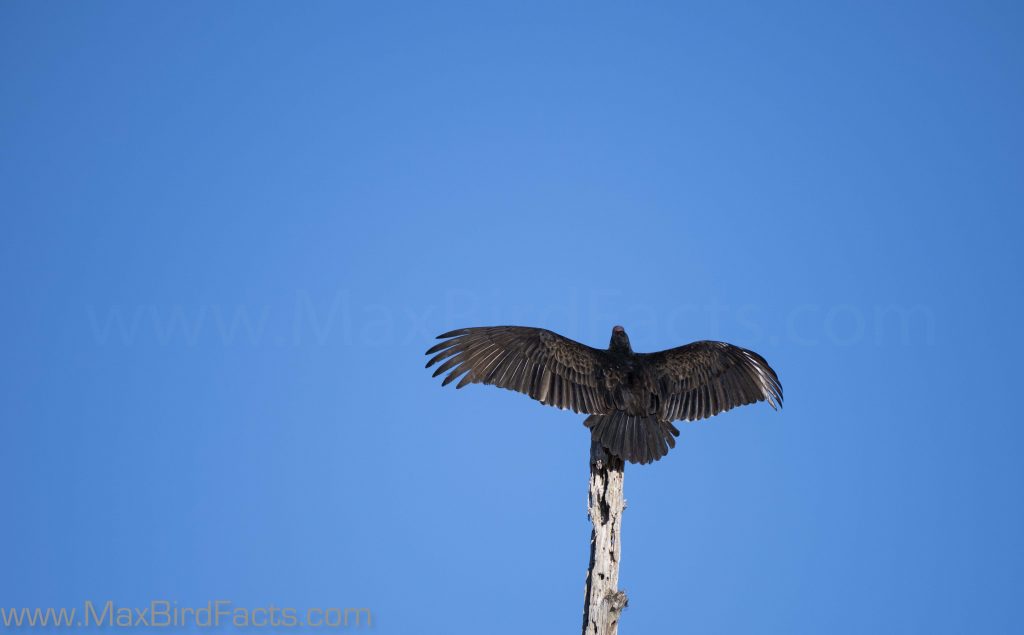
There are two routes these birds can take to get warmed up. First, moving muscles around to create heat in the way of movement and activity. This will require energy, and the vulture might not have enough stored up from the previous day.
The second route is to find a sunny patch, spread your wings, and let the solar radiation warm you. This is by far the more popular option with these birds.
Put yourself in their shoes, or rather talons. If you could get the same energy as a workout while not having to do anything other than standing still with your arms stretched out, which would you do?
You actually might already be doing this. If you drink coffee or another caffeinated drink in the morning, you take the same approach as the vultures!
Think about it. Caffeine is a psychoactive drug. It causes a spike in your mental faculties and increases your heart rate.
All of this gives you the same result that the vulture achieves while basking, getting a head start on waking up.
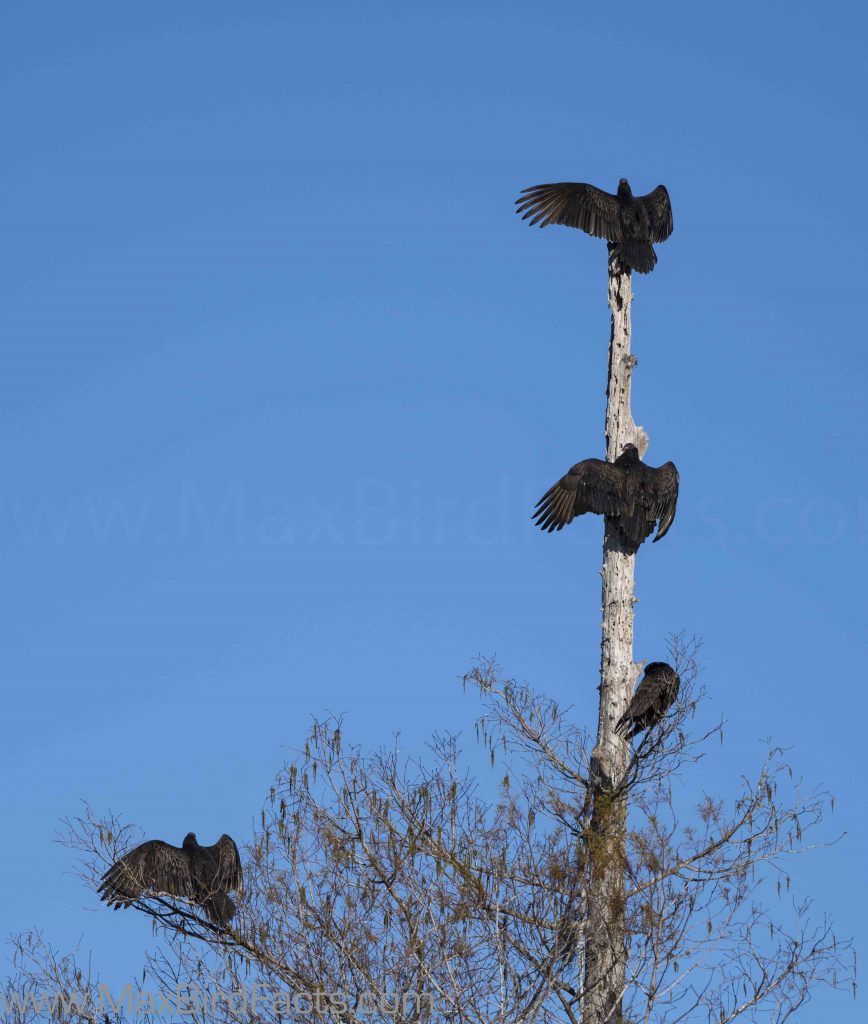
They optimize the amount of sun they absorb by finding a clear patch and spreading their wings. This position is called the horaltic pose.
The prime area for these birds to catch the sun’s rays would be at the treetops. Vultures fundamentally turn themselves into solar panels, angling their dark backs to the sun to soak in as much warmth as possible.
If their feathers weren’t black, then they wouldn’t absorb the heat as efficiently. Over tens of thousands or even millions of years, natural selection has chosen these dark feathers to be the predominant aspect of these birds.
Natural selection works on random mutations within populations of animals. It does not pick or choose what is best, and the animal cannot determine its traits.
Throughout the history of Cathartiformes, there were probably some populations with much lighter-colored feathers. Over time they would become outcompeted for food by their darker relatives, who could get an earlier headstart. However, these dark feathers also lend themselves perfectly to our second theory.
Cleaning Parasites
A vulture’s black feathers are designed to absorb as much heat from the sun as possible. Undoubtedly aiding in the first theory’s goal, to warm up quickly after the cold night, but this also could serve a secondary use.
The need to remove parasites is elevated with these birds. Because they feed primarily on rotting flesh, that food source is covered in insects and bacteria that can be harmful.
Some of these pathogens will inevitably find their way onto the bird, and there has to be a method of removing them. Ornithologists conducted controlled tests to observe how hot these feathers would become under direct sunlight.
They found the feathers would routinely surpass 140˚F! This is well within the range of killing most harmful bacteria and parasites, so this is an explicit use the birds exploit.
Here’s an example. If you have a dark-colored car, as I do, you will know it can get astonishingly hot when it sits in the sun for even a comparably short amount of time. The feathers are doing this same action.
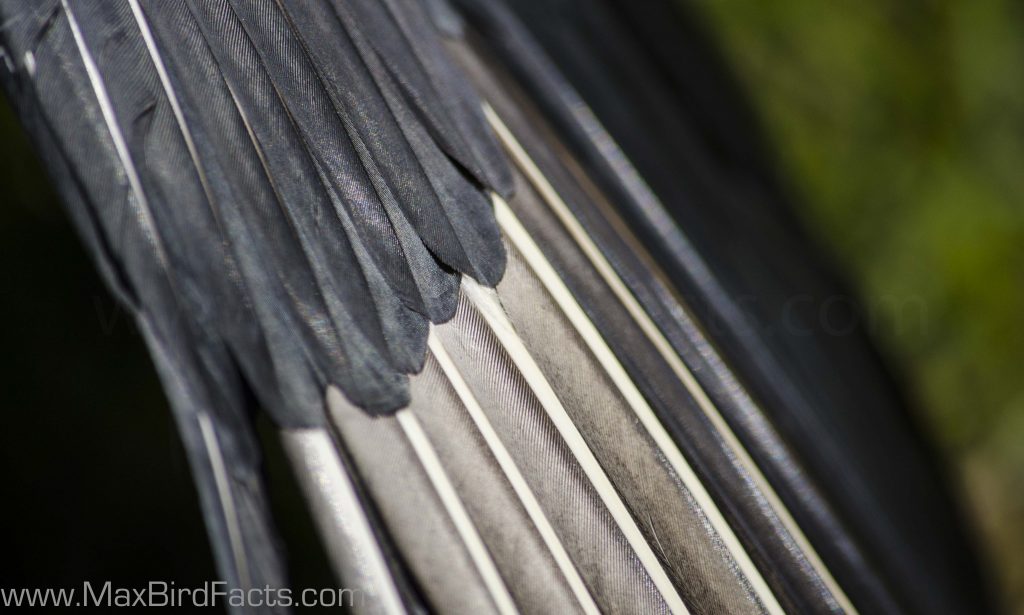
Mites, lice, ticks, and other creepy crawlies love to hide in feathers. These parasites can damage the feather itself or attack the bird and feed on its blood and tissues. This is a sizable problem for any animal, and there are dozens of ways to fix it.
One of the more energy-saving ways to get rid of these hitchhikers would be to have them leave on their own accord. The absorbed heat creates a sweltering environment inside the feathers, forcing the parasites to flee.
Remember that hot, dark-colored car we mentioned earlier? Think about climbing into it and not being able to turn on the air conditioning or open any windows. I know I would want to get out as soon as possible.
This is what I believe these vultures are doing, giving the parasites the ultimatum of leaving or being roasted alive.
Digestive Aid
I wanted to add this section because I think it is important to note the way science and our understanding of it are always changing. I remember watching nature documentaries about Africa while I was little. They were showing a mass of vultures feasting on a dead wildebeest.
While some birds were picking apart the mammal, others were standing off to the sides with their wings spread. The narrator mentioned that they were absorbing the sun’s heat to help them digest their food quicker so they could take flight promptly.
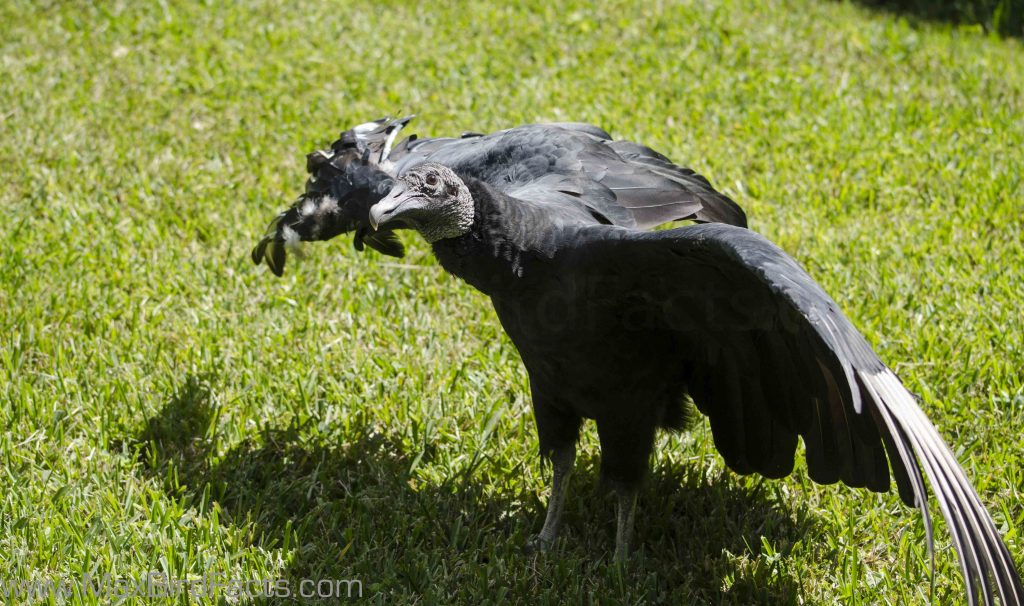
Vultures, and many scavengers, will often gorge themselves when they are gifted massive amounts of food because they may not have another meal for quite a while.
Birds are very dependent on weight, and if they have overeaten, they might not be able to take off from the ground. Being grounded is incredibly dangerous because a bird has nearly zero defense against predators.
I can see where the logic of this theory is placed. Large groups of birds are all fattened with half-rotten flesh and cannot take off, so they spread their wings to gain even a little increased digestion. Regrettably, from all the research I’ve done, I cannot find anything to back this theory for a digestive aid.
I think this behavior is acting to make the vultures more intimidating while they are vulnerable. Suppose you ever go into bear or mountain lion country. In that case, the first thing rangers will tell you to do if you see one of these predators is to make yourself as big as possible and scream your head off. Frequently resulting in the animal running off.
With lions, hyenas, jackals, leopards, and a whole array of predators capable of killing these birds, this seems to be the most rational reason for them to keep their wings spread.
Making their appearance larger and more threatening than they genuinely keep the vulture safe. Huddling together in a large mass can further deter even the most desperate attacker.
I have a second thought about the digestion theory. Maybe it isn’t so much the digestion as it is the purification of the food. Let’s go back to our hot car example.
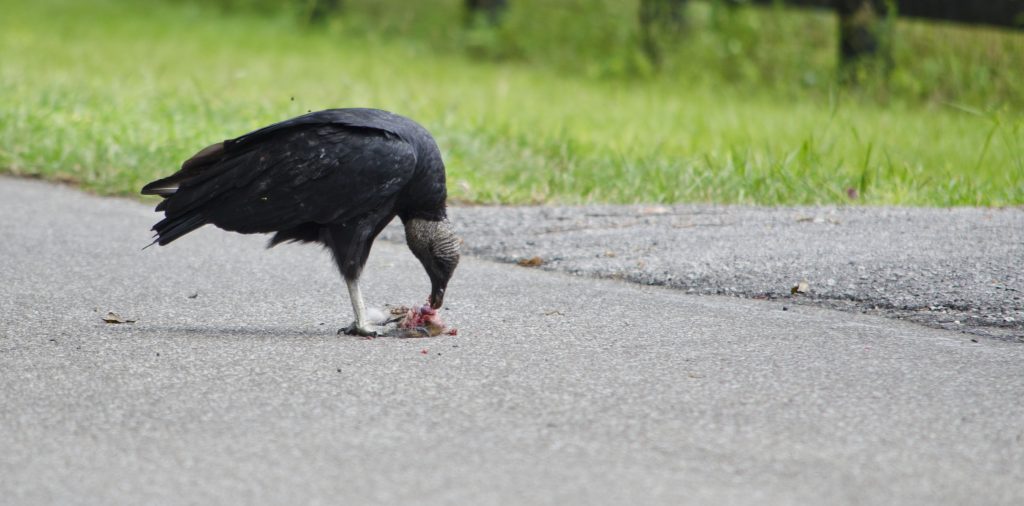
The inside of the dark car is at an amplified temperature and is not sustainable to stay within. If you are cooking meat, you need to raise the internal temperature to a precise range to kill the bacteria and nasties.
What if they are raising the temperature of their digestive system to help kill pathogens inside the meat? I know vultures have some of the most potent stomach acids in the animal kingdom because of the food they consume, but maybe this is a side benefit.
Just like the advantage of killing parasites by quickly absorbing heat to start their morning, maybe this is simply another added advantage.
Again, this is all a speculation I came up with while researching and writing this article. I couldn’t find any sources, scholarly or otherwise, that mentioned any relationship between digestion and thermoregulation in vultures.
Let me know what you think of this theory and if it has any merit other than being a defensive display to ward off predators.
Now We Know Why
So, we now know that the main reasons vultures spread their wings are to warm up in the morning and remove parasites. There is a tertiary but unsubstantiated theory that it could be related to digestion. However, I think this is mainly to deter predators while the bird is defenseless on the ground.
The black color of the feathers has been selected by natural selection through random mutation over millions of years. Meaning the vultures with darker feathers were more efficient at warming up and getting rid of parasites.
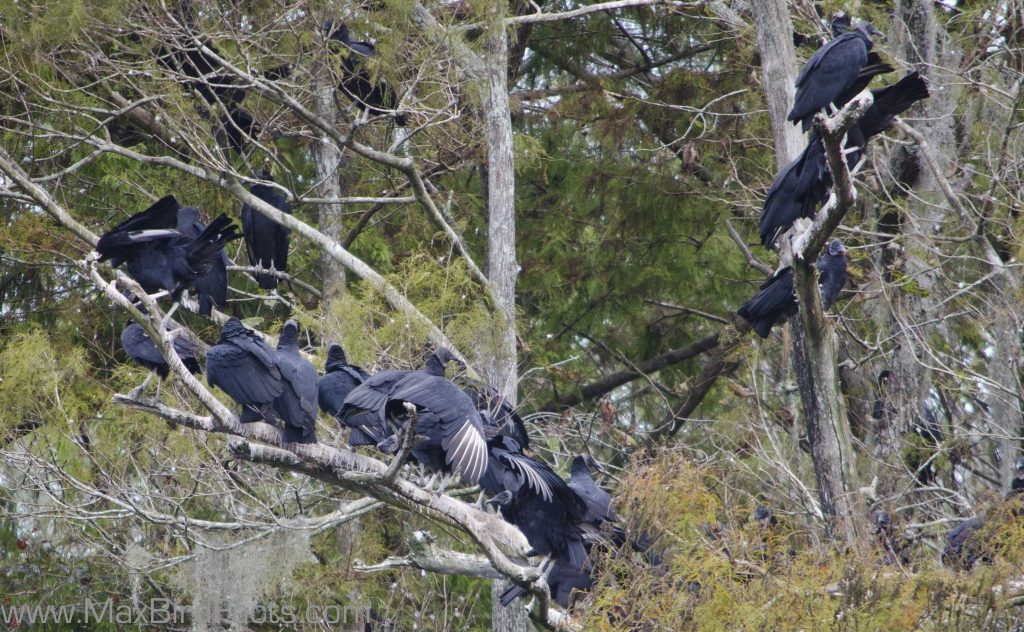
Efficiency is the name of the game for birds. More efficient individuals will be more successful in foraging and finding mates. They then pass on their genes and traits to future generations.
Dark colors absorb the sun’s warmth more readily, so these darker birds would be able to start looking for food sooner than birds with a lighter aspect. This would also mean that the darker feathers absorb more heat and make them less desirable for parasites.
I hope you can appreciate these fantastic birds a little more now after reading this. Let me know what else you want to read about in the comments!
Make today great!
Max
Discover more from Welcome to MaxBirdFacts.com!!!
Subscribe to get the latest posts sent to your email.
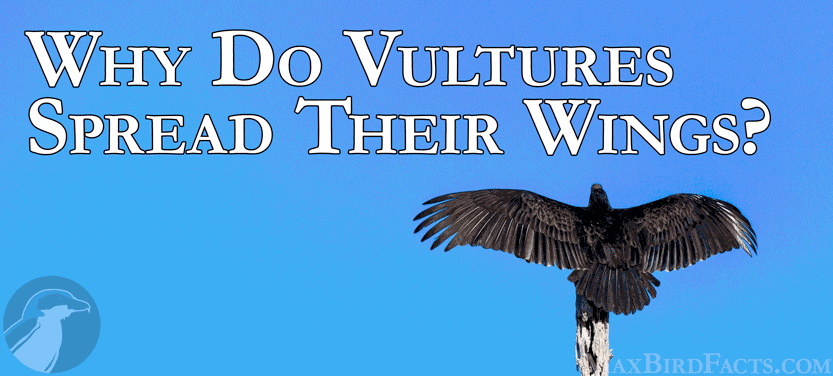
Pingback: Vulture Lifespan – What is a Vulture? – Welcome to MaxBirdFacts.com!!!
Great read. Thanks! I love vultures after I fed one by hand – resident at a sanctuary, named Barfy. Barfy took the food from my hand so gently, stepped back to eat. I enjoyed learning more about vultures 🙂
I’m so glad you enjoyed my article, Greer! And yes, vultures are amazing creatures and don’t deserve the stigma we’ve given them to be disgusting parasite-riddled roadkill eaters. Like any other avian species, vultures are full of mysteries that we must spend time discovering and observing!
Witnessing Black Vulgars clean up a farm pond fish kill!! Lots of wing spreading going on and no threats to their safety; so I go along with your digestive theory!!!!!
Fantastic!!! Thank you so much for your comment! It’s always so great knowing other people are observing similar behaviors. Thank you for your comment Andrew! I hope those vultures had a nice fish dinner.
Fascinating and extremely well-written piece. Thank you.
Thank you so much!!!
Pingback: How Does an Anhinga Thermoregulate – Warming Up After Swimming – Welcome to MaxBirdFacts.com!!!